Your cart is currently empty!
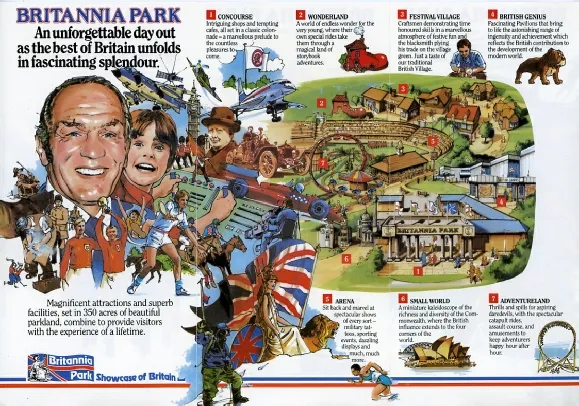
Britannia Park & The American Adventure
During the early 1970s a large open cast coal mine near Ilkeston was cleaned up by Derbyshire County Council and turned into a 1,000 acre country park which opened to the public in 1976. Known as Shipley Park the site featured miles of pathways, cycle ways and bridle tracks with woods, lakes and picnic areas.
A third of the site was earmarked for a zone of “intensive activity”, in other words, some kind of leisure or tourism facility. Various ideas were thrown around including a golf course, conference centre, hotel and ski slope. Early maps showed a sporting arena and a tram running alongside the lake.
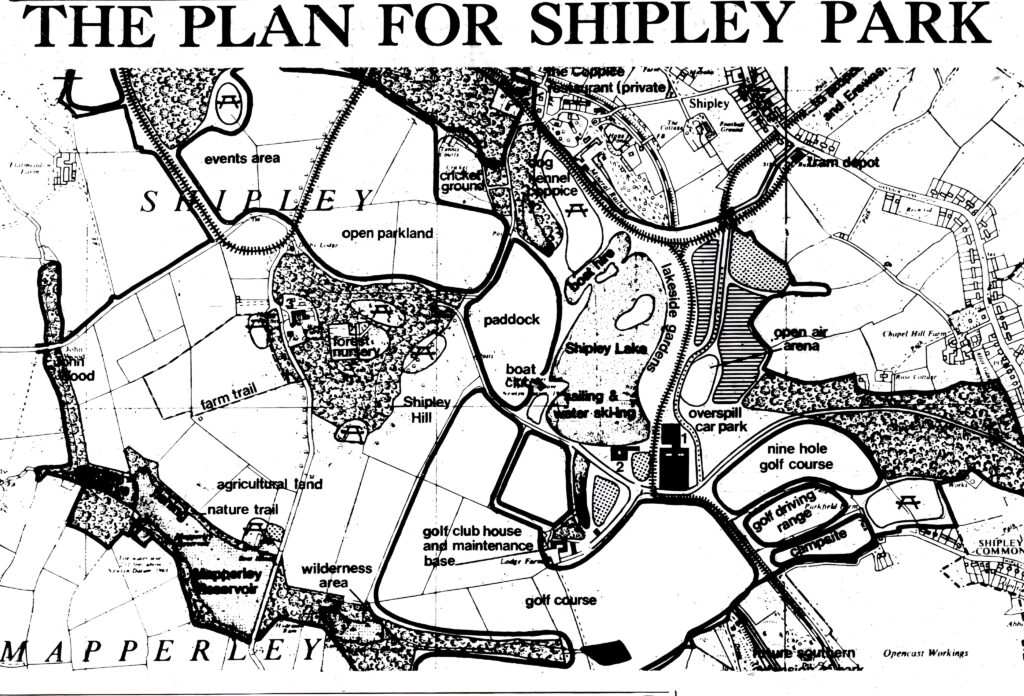
In 1979 negotiations started with Peter Kellard who ran a leisure company in Bournemouth called KLF. He proposed a theme park based on the ‘Best of Britain’ where the country’s genius and ingenuity could be celebrated.. He wanted the park to have a strong educational theme as opposed to having lots of thrill rides. He made bold claims that it would become the UK’s top tourist attraction.And he would call it Britannia Park. The council liked the idea and an agreement was drawn up.
The only other project that KLF had been involved with was a model village at Tucktonia in Bournemouth which opened in 1976. Kellard said that he planned to build a similar attraction at Britannia Park which would feature buildings from 35 different countries, mainly those connected with the old British commonwealth.
A brief history of Tucktonia
Harry Stiller came from a wealthy family (his dad invented the 1001 carpet cleaner) and during his younger days he became involved with motor racing and won the Formula Two European championship. During the early 1960s he purchased the Tuckton Golf Course in Bournemouth and later developed the land into a family leisure park with a boating lake, swimming pool, miniature railway and amusement rides. He converted the old club house into a pub known as The Golfer’s Arms. In 1975 he sold the site to Grand Metropolitan but remained on as an advisor.
One of his long-term goals had been to build a model village and this became reality in 1976 when Grand Met spent £850,000 building a 3.5 acre “model land”, said to be the largest in Europe. It was a recreation of the “Best of Britain” with everything built to the large scale of 1:24. The model of St Paul’s Cathedral was 14ft tall, and the Post Office Tower was 26ft in height. KLF won the contract to design and build the attraction, although the actual model making was subcontracted out to others. 30 of the models were built by Don Lawrence.
The project was a success, but the park closed in the mid-1980s when it was discovered that the land was worth £10 million. Houses now occupy the site. Where was it located? Search out The Meridians in Christchurch.
A contract is signed
A contract was signed in 1980 with the council agreeing to lease Kellard 350 acres of land for a period of 90 years. They agreed to stump up £1 million in return for an annual rent plus a percentage from anyone who rented space in the park. The council applied for planning permission from themselves, and not surprisingly, it was granted. Everything was looking good and KLF announced the park would be open in 1982.
But the scheme soon ran into opposition when a local pressure group was formed, calling themselves ‘The Friends of Shipley Park’. They mounted a “vociferous” battle against the development and sent 1250 letters of objection and drew up a 5000 name petition. They said the planning permission was invalid. A judge at Nottingham High Court agreed and in February 1981 the application was quashed.
In May of the same year KLF suffered another blow when Labour swept to power replacing the old Tory government at Derbyshire County Council. The new council leader, David Bookbinder, strongly opposed the scheme and wanted to renegotiate the lease. The once cordial relationship with the council soon turned very sour. But there wasn’t much that Bookbinder could do. The council had inherited a signed contract obliging them to continue. So he became a “hostile partner” and did everything in his power to make life difficult.
In 1982 KLF issued a writ to the council saying they had a binding lease and planned to push ahead with the project. Other objections were received from the highways department and the parish council. More arguments and battles followed including two court cases. In 1983 permission was finally granted but not before another visit to the HIgh Court in 1984.
1984: Construction finally begins
Construction finally began late in 1984 and a total of £9 million was spent on the site. Half of that figure came from bank loans. Another million came from the council. The remaining £3.5 million came from contractors who were still waiting to be paid.
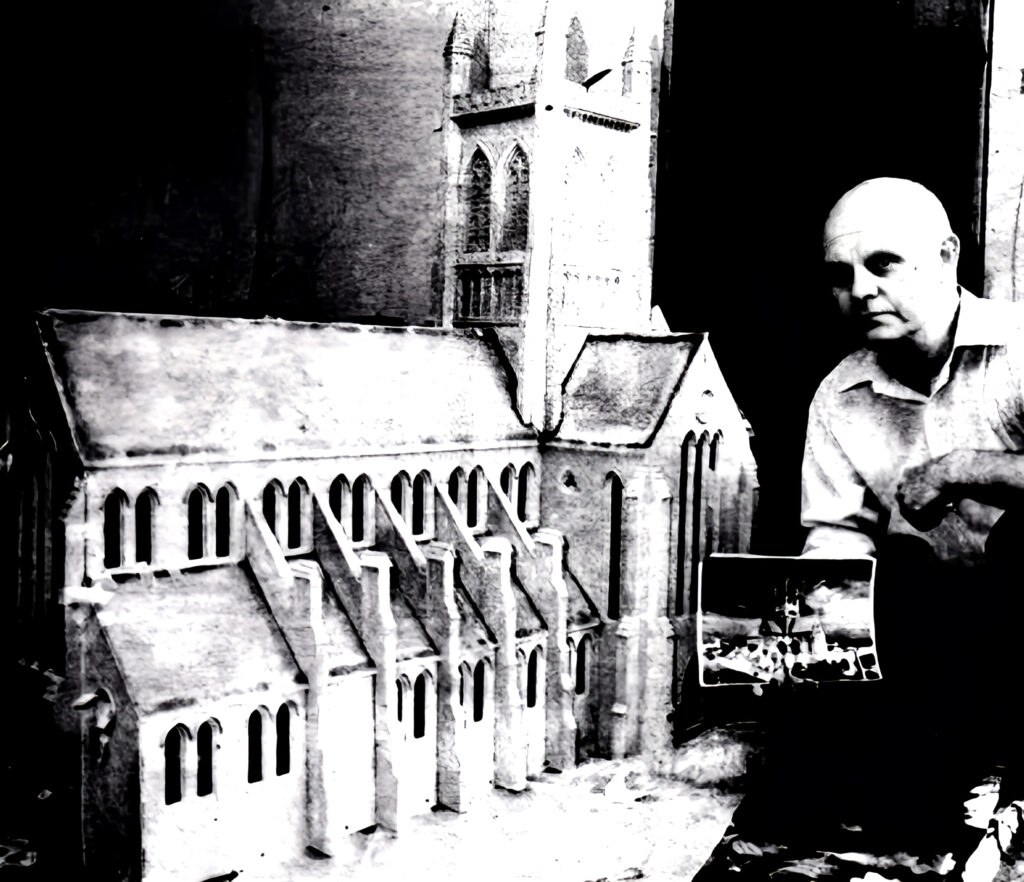
The park opened on June 27th 1985. Councillor Bookbinder was still doing his best to make life difficult and made it clear that he did not want an invitation to the opening ceremony. He banned 600 schoolchildren from attending and singing ‘Rule Brtiannia’. He said it was not an educational activity and that they were being “exploited” by the company. Amber Valley MP Phillip Oppenheim said of the ban: “This must be the most petty, mean and small-minded action by the county council to date”. Bookbinder ordered all publicity material for the park to be removed from Derbyshire libraries. The day before opening the park was visited by fire safety officials who had been warned of “serious shortcomings.” The park was given the all clear. A letter in the local newspaper said “What a great pity Councillor Bookbinder and his fellow councillors behaved so destructively over the opening of Britannia Park”.
It was rumoured that a member of the royal family might be attending the ceremony but instead it was boxer Henry Cooper, who also agreed to star in a TV advert for the park. Concorde flew up from London with a planeload of VIPs and performed three impressive flyovers across the park. Marching bands, clowns and morris dancers entertained the crowd.

Unfortunately it was plainly obvious that the park wasn’t ready and had opened too soon. Apparently the banks had pressured them to open early. Lorries and JCBs flew around the site on opening day. A local newspaper said “Visitors expecting to find an Alton Towers instead found a half-finished muddy building site pretending to be a theme park”.
Many of the promised attractions weren’t ready. The British Genuis exhibition, heralded as the centerpiece of the new park, wasn’t finished. Neither was the model village or miniature railway. One visitor commented that everything could be seen in “less than an hour”. The £3.50 adult ticket price was reduced to £2 within a week. Construction continued and a host of special events were announced for the summer.
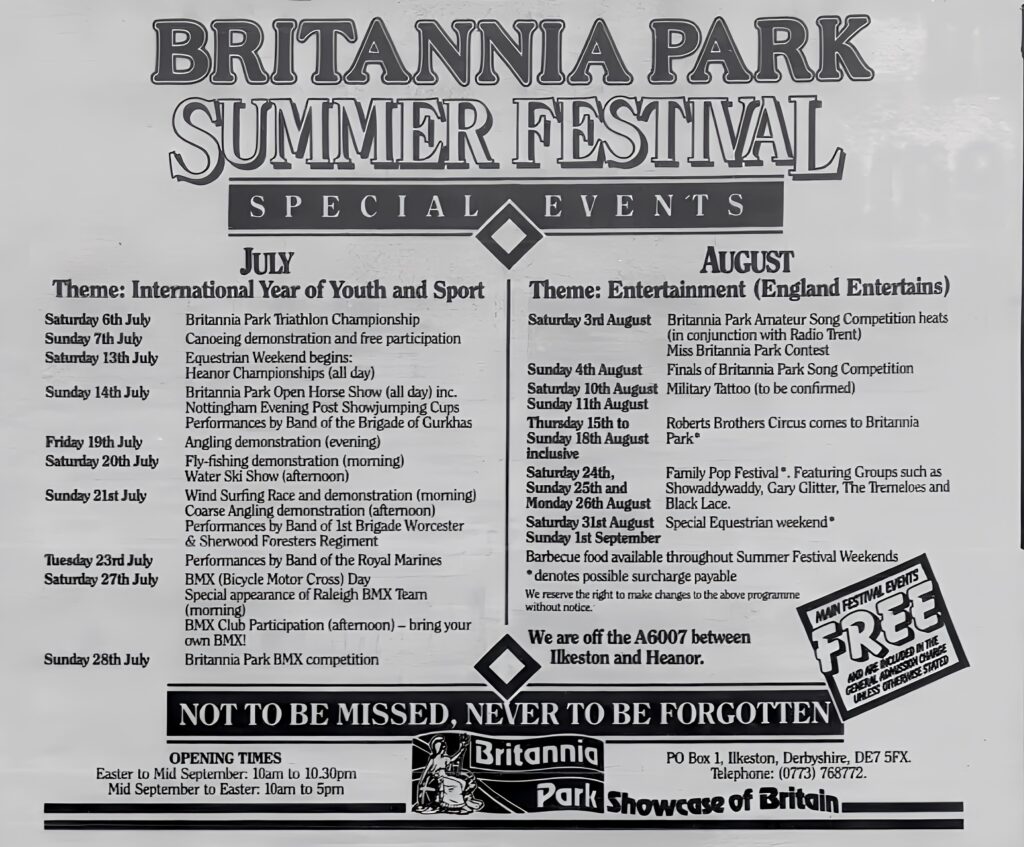
By the end of July most of the attractions were up and running and the ticket price was increased back to £3.50. In early-August the park hosted a “free admission day” and 30,000 people showed up causing huge traffic jams in the area. The staff had trouble finding parking for the 8,000 cars.
The British Genius exhibition featured waxworks and dioramas of famous figures such as Sir Issac Newton, Shakespeare and Queen Elizabeth I, along with cars, planes and inventions through the ages. A full size reconstruction of Downing Street featured Churchill’s original wartime car.

The £120,000 miniature railway was operating using a diesel loco and carriages that had run at the previous year’s Liverpool Garden Festival. The craft village was full with 32 different vendors. An arena was built featuring a covered 2000-seat grandstand. Planning permission to install a Huss Condor ride, along with the UKs longest slide, were rejected.
The ‘Friends of Shipley Park’ were still very vocal and one member wrote to the paper talking about how he remembers the land being rolling fields, hills and lakes. Someone replied that he would need to be 300 years old to remember all that: “I’m a pensioner and all I can remember is filth, slurry and pit hills” and went on to say that Britannia Park should be applauded for “converting a few acres of utter wasteland into a pleasant retreat.”
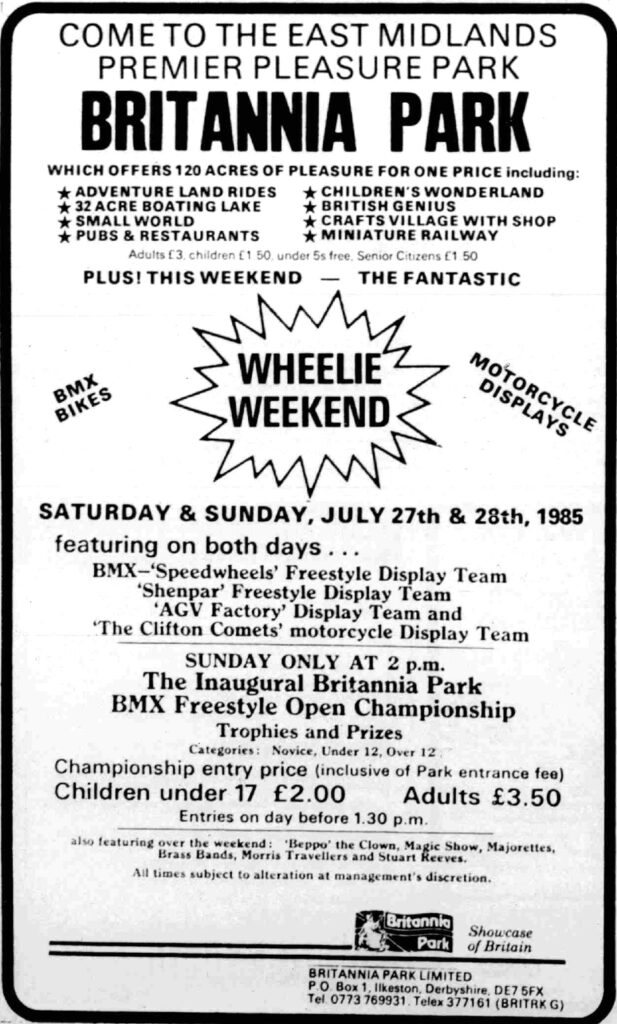
A local newspaper columnist, who had previously been critical of the park, paid a visit in mid-August and was “pleasantly surprised at just how good it all was”. He went on to say that “I’m convinced, that given half a chance, this 350-acre potential paradise can become second to none”.
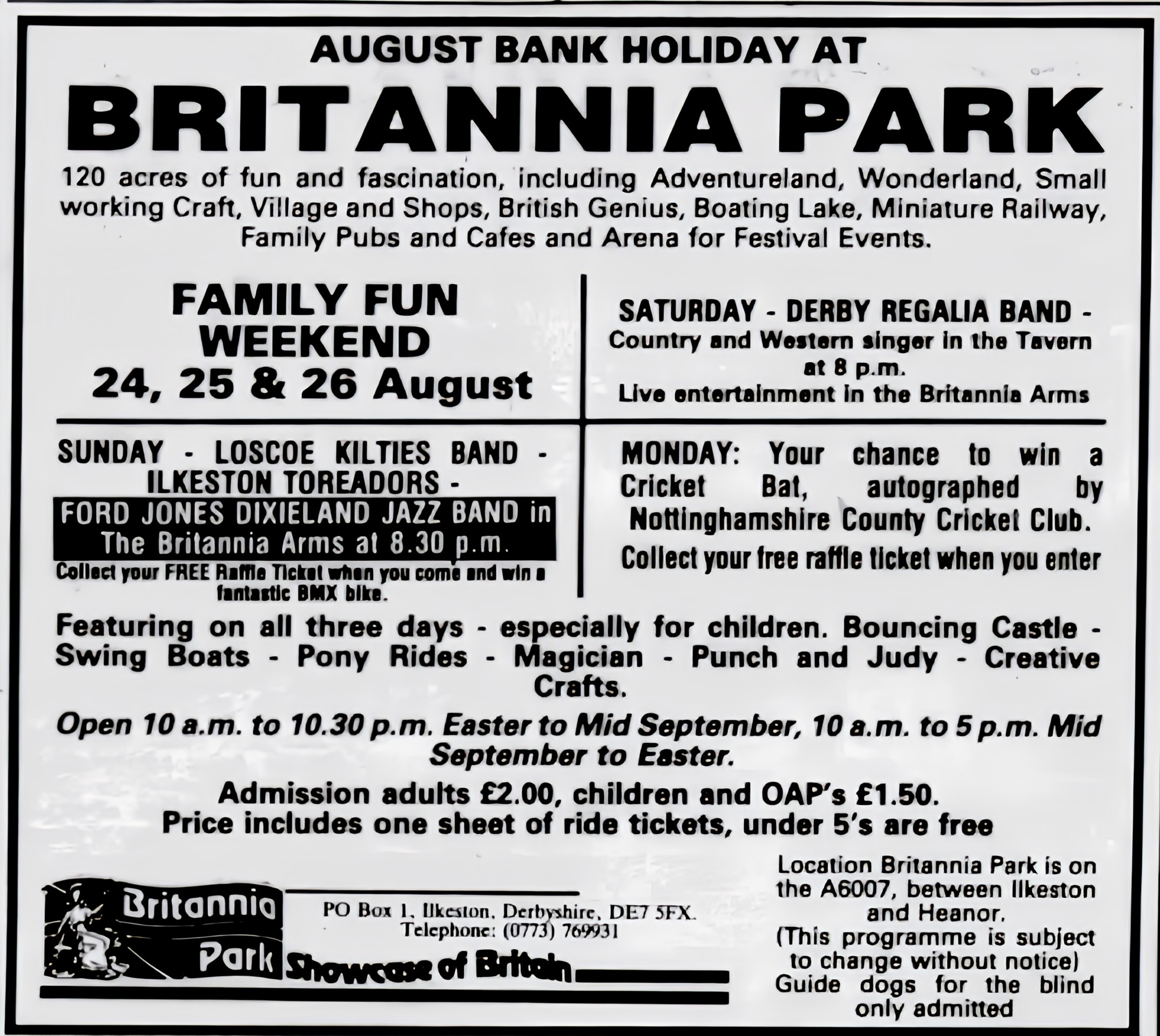
15,000 paying customers visited over the August bank holiday weekend although the planned pop concert was cancelled after the park failed to give sufficient notice to the council.
But overall the summer had been a huge disappointment in terms of visitor numbers. The opening day disaster was still fresh in many people’s minds and, even though it had improved dramatically, people just stayed away. Numbers were well down on what had been predicted. Things weren’t helped by having the wettest summer for 20 years.
The receivers are called in
On 10th September the park called in the receivers. Some of the leased attractions were returned to their owners. But the rest of the park remained open. Councillor Bookbinder suddenly changed his opinion and expressed an interest in taking it over, saying it was “a place of beauty”. He went on to say he had no personal feelings over the long battles he’d had with the owners and that “we are sad that a lot of people have staked a lot into that park”.
It was soon discovered that 609 creditors were owed a total of £9.3 million. Even Henry Cooper hadn’t been paid. Neither had Concorde. A local construction company who had sculpted most of the land was owed £500,000.
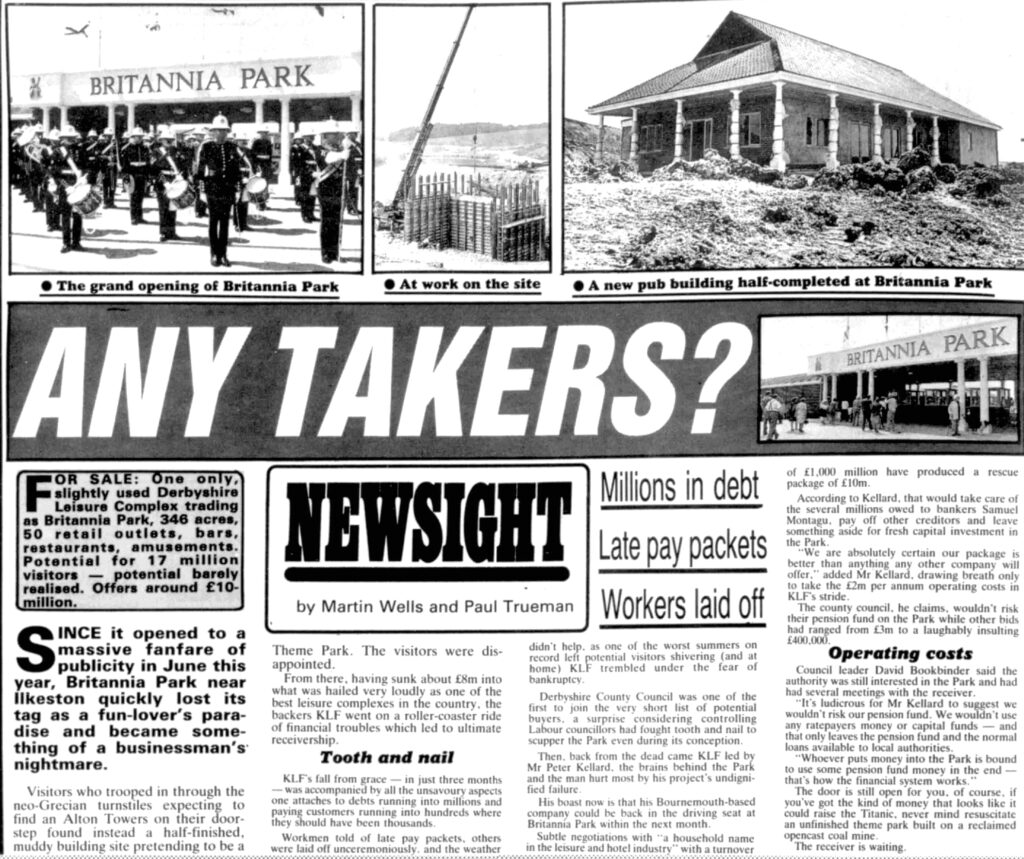
A lot of businesses ended up losing everything. Don Lawrence, who built many of the models for Tucktonia and Britannia Park, once had two factories employing 30 people. He had to sell the business, his house and his car. He never even got his models back.
The receivers allowed the park to remain open until the end of November due to a planned ‘Festival of India’ exhibition which was coming up from Alexandra Palace (London) where it had been a huge success. By this time, the only attraction still operating was the craft village, and some gift shops.
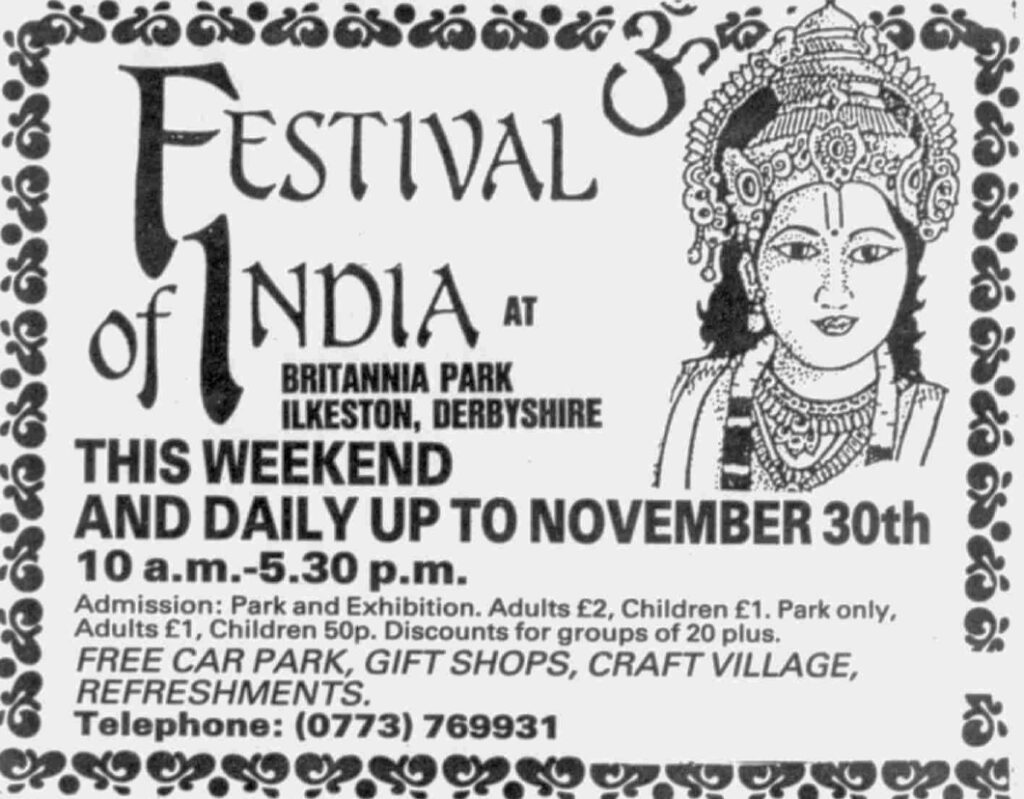
There was talk of trying to keep the park open through the winter but it finally closed for good in early December, just 5 months after opening.
The following Easter the craftsmen returned and went back to work in the craft village. The receivers wanted them out so they could sell the park with vacant possession. They refused to move so the power and phones were cut off. They staged a sit-in protest. A deal was later reached (they were each offered £4,000) and they agreed to leave by June, and the power and phones were reinstated.
Following a 17 month trial (at that time the longest trial in British history), Peter Kellard was sentenced to four years’ imprisonment, and the Chairman of Britannia Park Ltd, John Wright, received six months.
The council buys the park
In June 1986 the council bought the park for £2.5 million. The following month a deal was formed with Park Hall leisure, owned by the Granada Group, and a new company was formed called Shipley Park Ltd. The six-person board was made up of three council members and three Granada reps. Granada paid £1.5 million to take over the lease with a pledge to invest £7.5 million in the first season. They decided to ditch the educational theme in favour of a full-blown amusement park based on the American west. The park’s name was announced as Silver City but this was later changed to The American Adventure Theme Park. John Rigby of Park Hall Leisure was put in charge of developing the new park.
Read more about Park Hall Leisure in our blog post
Rigby, along with operations director John Ellis, were put in charge of redeveloping the old Britannia Park. The two John’s actually lived on the site for a few months.
In 1986 Rigby contracted with a British company called Mimafab to build a log flume at Camelot. The ride was successful, so he partnered with them again to build a bigger version at the new park, along with a powered mine train coaster.
A brief history of Mimafab
Mimafab, based in Kirby Misperton, was formed by Mike Anderson in 1984 after he won a contract to build a monorail at Flamingoland. He later teamed up with Gyro Mining Transport (GMT) and more rides were produced.
GMT was a supplier of railway equipment and rope haulage systems to the National Coal Board. Due to the decline in the mining industry the company formed a new leisure division, following an approach from Anderson, to design and build amusement rides.
In 1989 the owners of GMT sold the business and started a new company called WGH Transportation which was focused solely on the amusement ride business and continued to work with Mike Anderson. Mimafab was later renamed Meridian Motion Engineering and then Big Country Motioneering. Mike Anderson remained in control of all three.
At some later point Andreson became involved with Interlink. The whole thing is quite complicated but between 1985 and 1990 the combination of Anderson’s three companies, plus GMT, WGH and Interlink, resulted in several rides being built including some on the continent. This included 7 log flumes, 5 mine train coasters, 2 miniature railways and 2 river rapids rides. This consortium were also involved with the Ultimate coaster at Lightwater Valley in 1991. Anderson died in 2014.
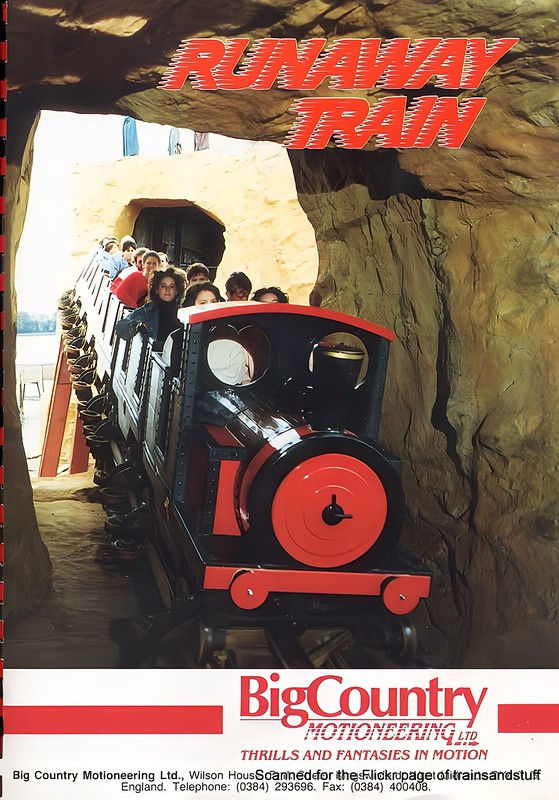
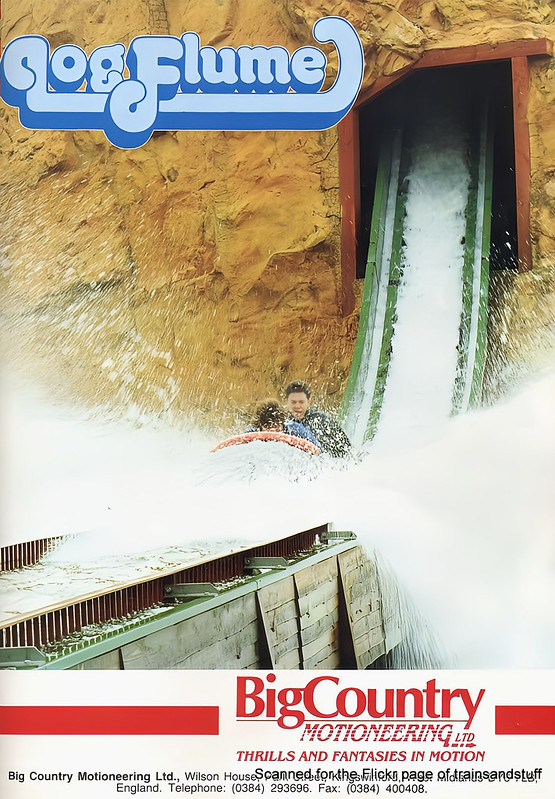
The American Adventure Theme Park
Severn Lamb of Stratford upon Avon built two paddle-wheel boats for the lake, along with a new train for the miniature railway (the previous one had been leased).

Italian company Zamperla supplied a powered ‘Buffalo’ roller coaster along with a pirate ship, kiddie train and a Ferris wheel themed after a wagon-wheel.
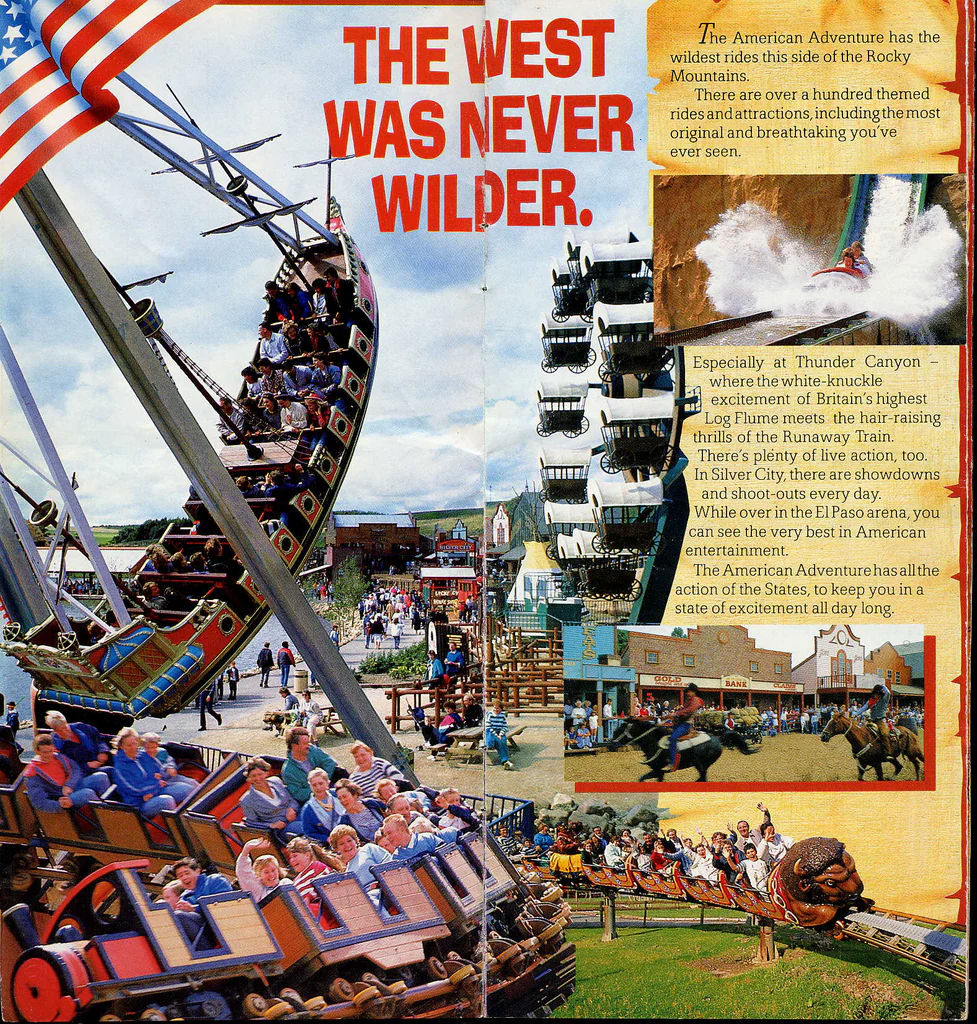
The former Genius building was converted into a huge indoor play area known as Pioneer Playland, the biggest in the country, featuring Mount Rushmore-style faces on the outside.
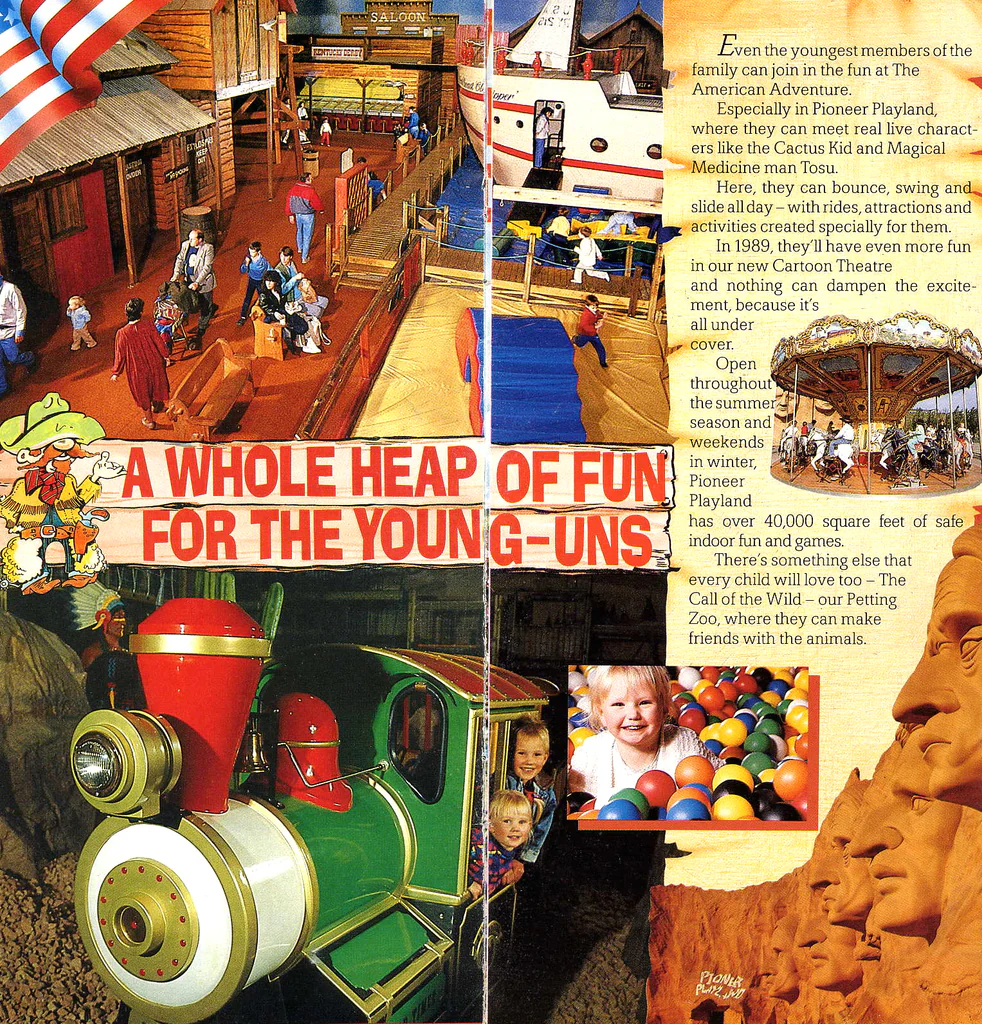
A western town was built with its own saloon bar and dancing show girls. The old Britannia Park arena was retained and used for cowboy shows, but in 1990 it was converted into a go-kart track. 12 live buffalo arrived from Chester Zoo – one escaped and “rampaged” through nearby Heanor for several hours before being safely recaptured.
The new park opened to media previews in May of 1987 but as it wasn’t quite finished, and not wanting to repeat what happened before, it wasn’t officially opened until July 1987. The official ceremony was conducted by music/TV personality Jonathan King. The park advertised itself as the only genuine theme park in the country.
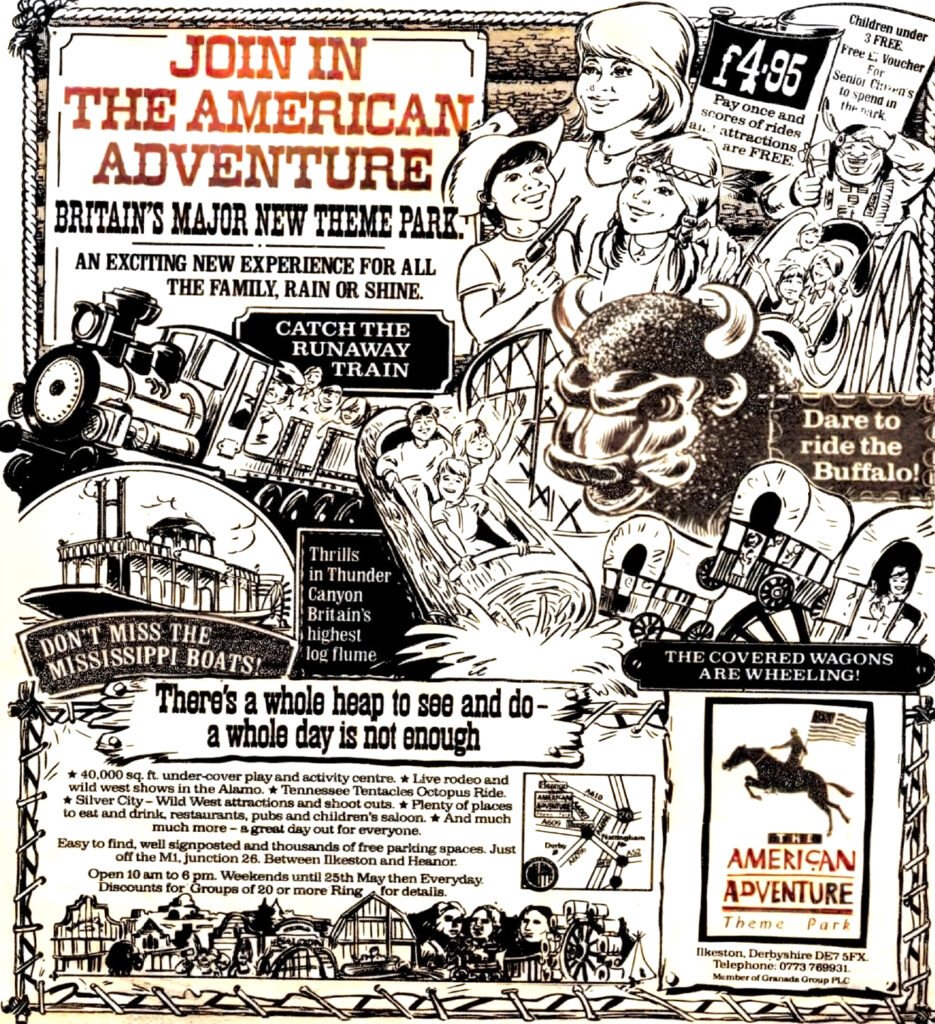
The first season was considered a success with 400,000 visitors. Admission price was £4.95 for adults. That summer a posse of American Adventure employees were kicked out of Alton Towers for handing out leaflets in the car park.
For 1988 another £3.5 million was spent with most of that going towards a new Mimafab/GMT river rapids ride, the UKs largest. It was said the monthly electric bill for the rapids ride was £7,000. Zamperla also supplied a balloon race ride. The admission price was raised by a pound.
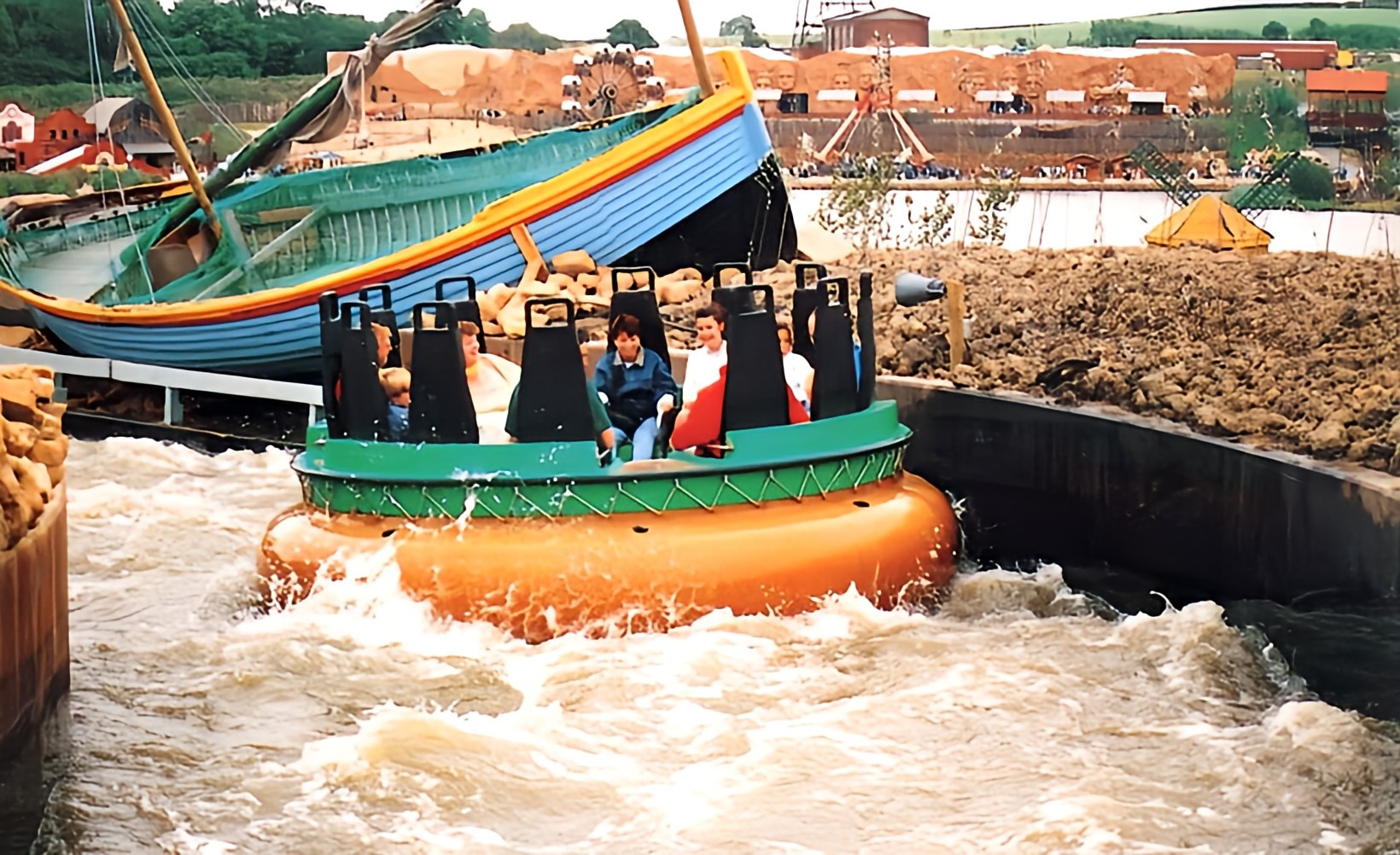

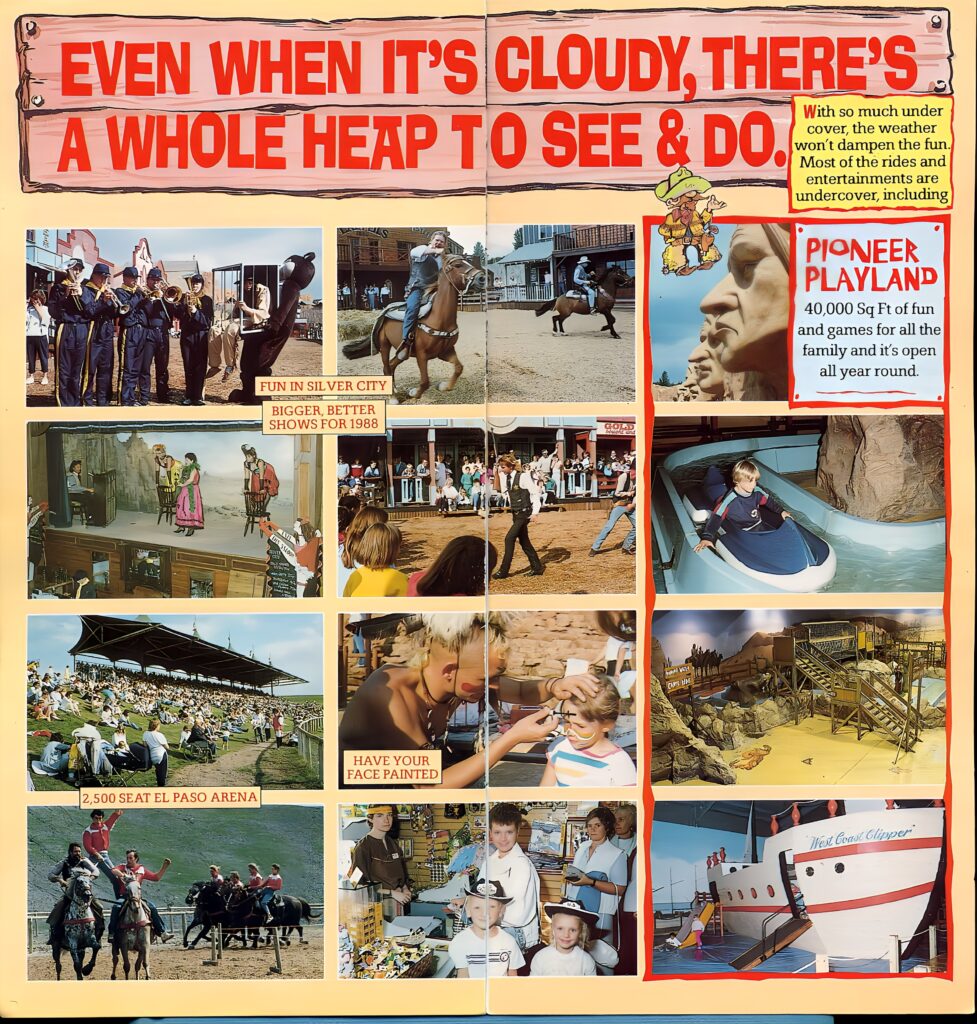
In May 1988 Rigby left Granada and went off to buy Windsor Safari Park.
For 1989 another £4 million was invested into a new space-themed area consisting of a Vekoma Boomerang coaster and a Cine 360. The miniature railway was extended to run all the way around the lake, and Severn Lamb supplied a second train.
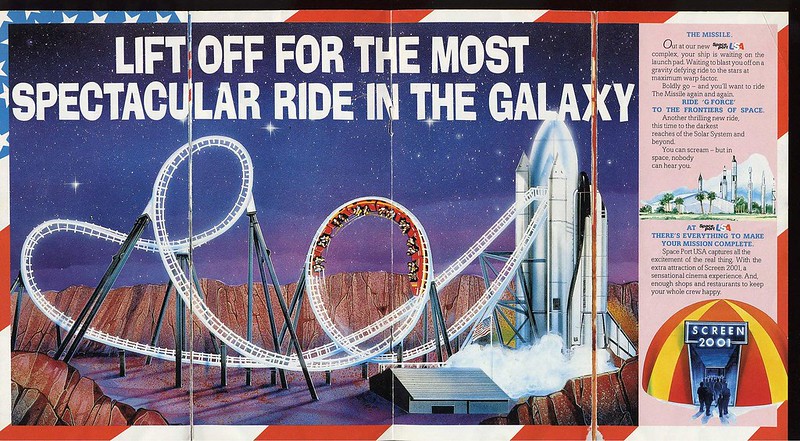
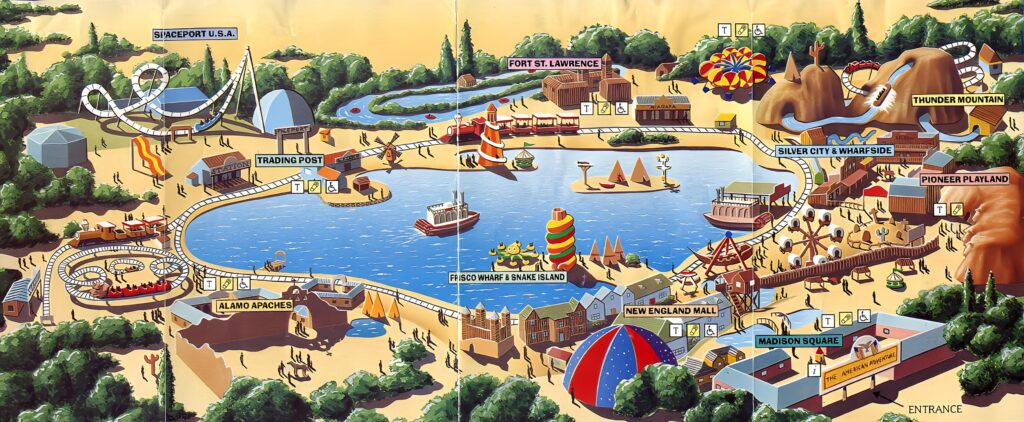
The Golden Era comes to a close
This really marked the end of the “golden era” for the park. In 1993 WGH returned and added a third drop to the log flume, making it the highest in the country. In 1994 a Motion Master simulator opened in part of the old indoor playground. In 1995 a secondhand looping coaster was acquired from Lightwater Valley. But not much else happened over the ensuing 6 years.
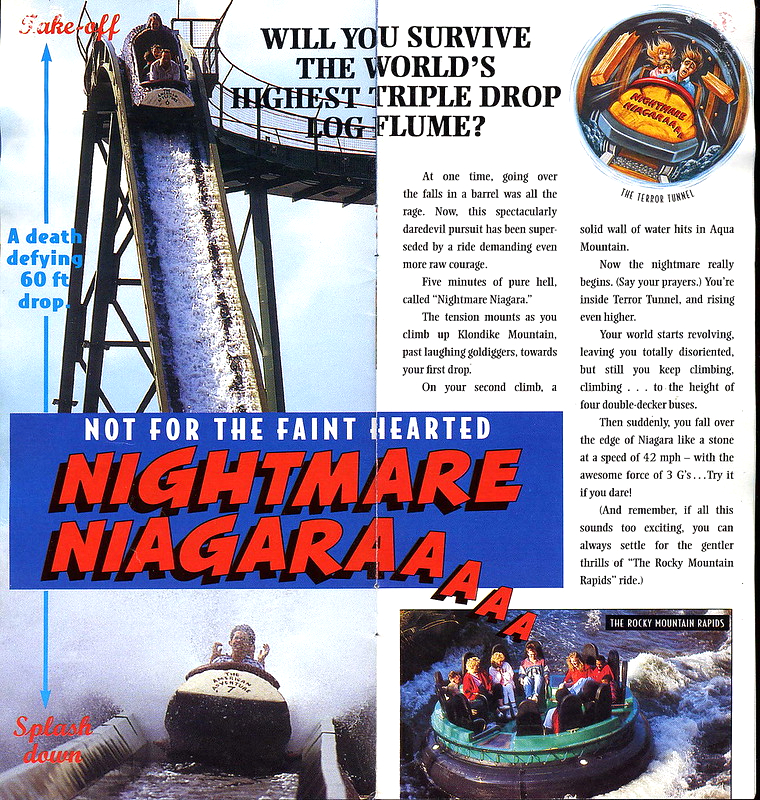
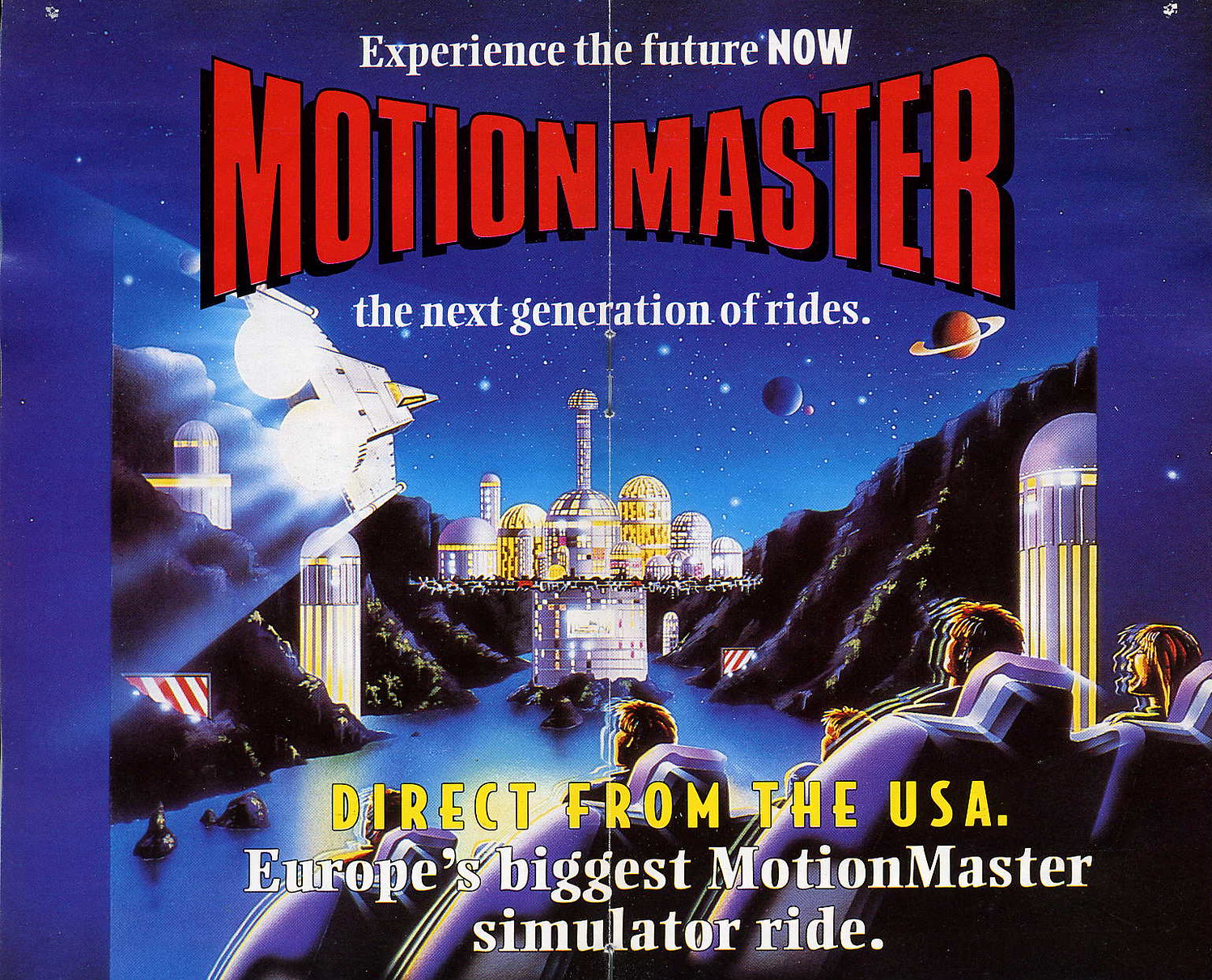
In 1996 the park actually had a record year with 625,000 people passing through the gates. But when you compare that to Chessington, who got 1.8 million visitors that year, or Thorpe Park, who got nearly 1.2 million, you can see why they were struggling. Ironically, around that time, American Adventure was arguably better than either of those two parks.
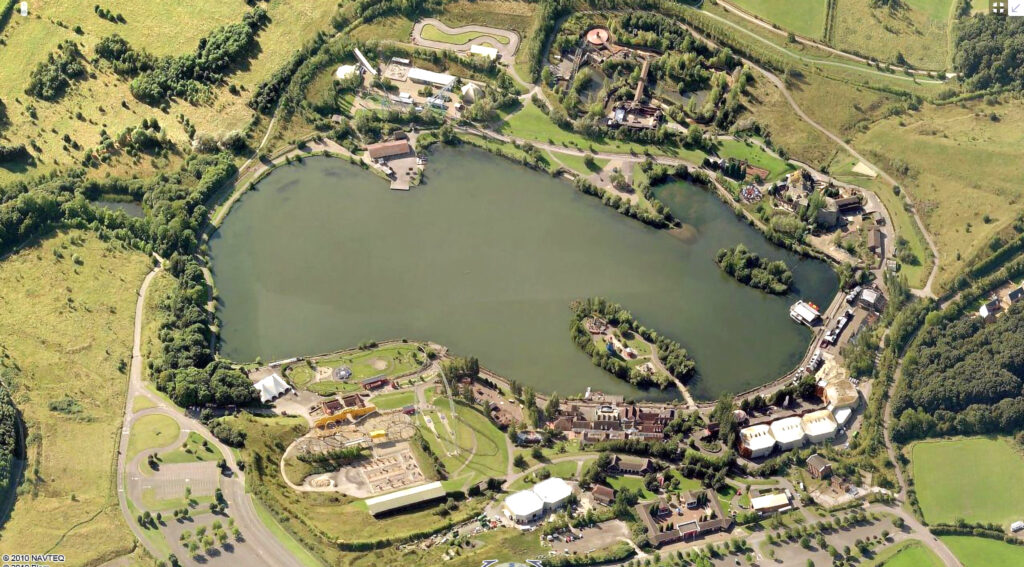
The park is sold
In 1997 Granada sold the park to a company called Venture World, controlled by Trevor Hemmings – you can read more about him in our Pontins blog. Alton Towers supremo John Broome was employed as a consultant and he became the public face for the company. Plans were announced to spend 7 figures redeveloping the park and the name was changed to American Adventure World.
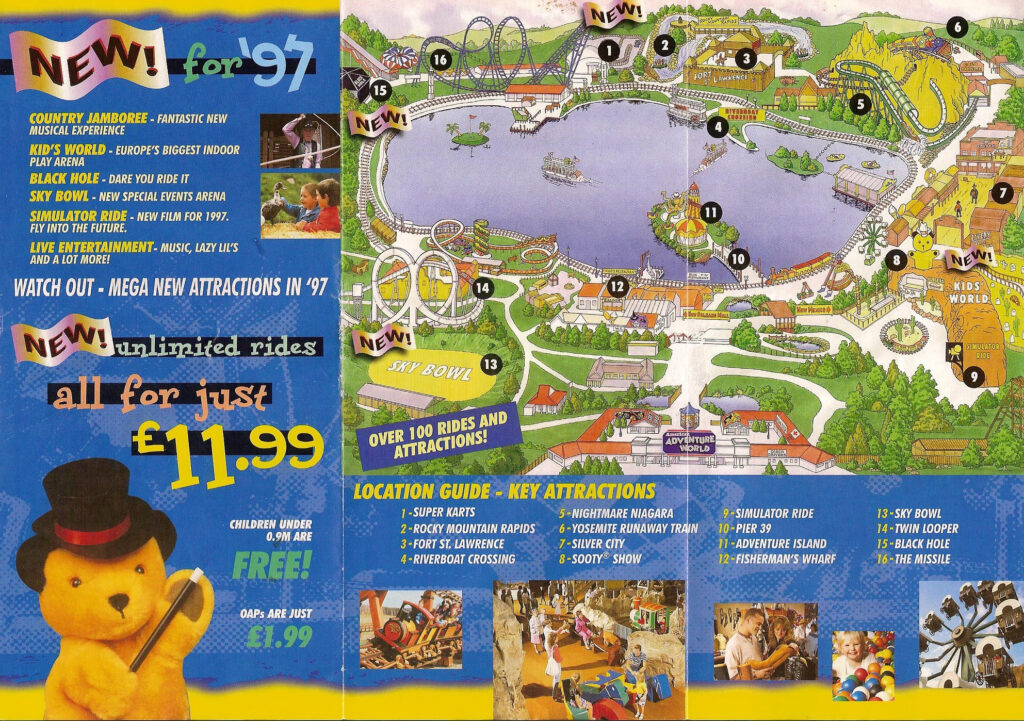
The main entrance was moved to a new location around the side. The original entrance, a remnant from Britannia Park, led into an attractive courtyard filled with shops and restaurants offering spectacular views across the whole park. The new entrance involved cutting a hole in the fence and adding some ticket booths. It was said the old entrance was suffering from subsidence, but in reality they just wanted the park on one level.
They launched a major publicity blitz and in their first season they installed a Sky Coaster (which was an upcharge attraction). In 1998 they added the Flying Island, a type of moving observation tower, which was officially opened by pop group Boyzone. John Broome left the company at the end of that year and not much happened after that.
Everything continued as before but while Chessington and Thorpe were pressing ahead with new rides and attractions, American Adventure became stagnant and was left behind in the dust with nothing new to offer visitors. At least they kept up with maintenance and the park always looked pretty good.
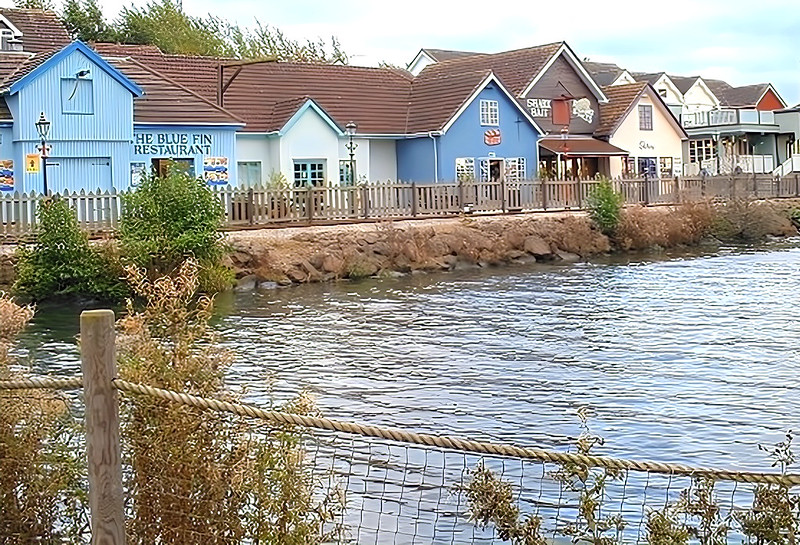
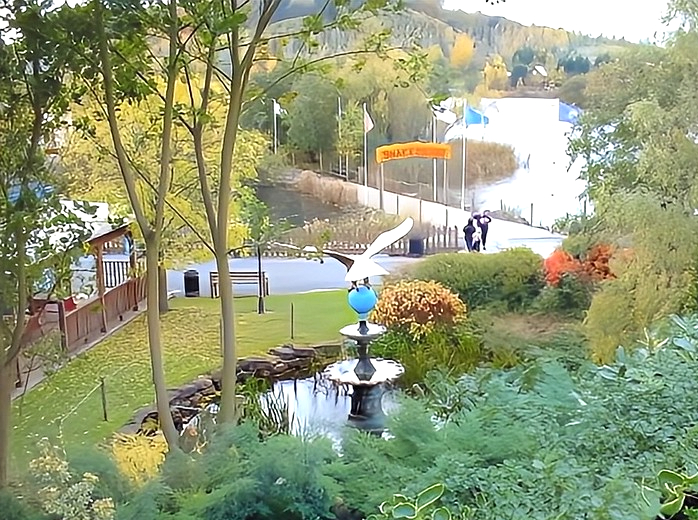
In 2005 they announced they were getting rid of the thrill rides and becoming a family park. The log flume, river rapids and Boomerang coaster were all closed and several small kiddie rides were installed. It didn’t seem to help much. Strangely, the river rapids was refurbished and reopened in 2006. But sadly the park closed at the end of that year.
According to company accounts, the park made a loss in every year it was owned by Ventureworld. In 2002 it was £1.1 million, in 2003 it was £1.2 million, in 2004 it was £2 million. In the final season it was £1.6 million.

Leave a Reply